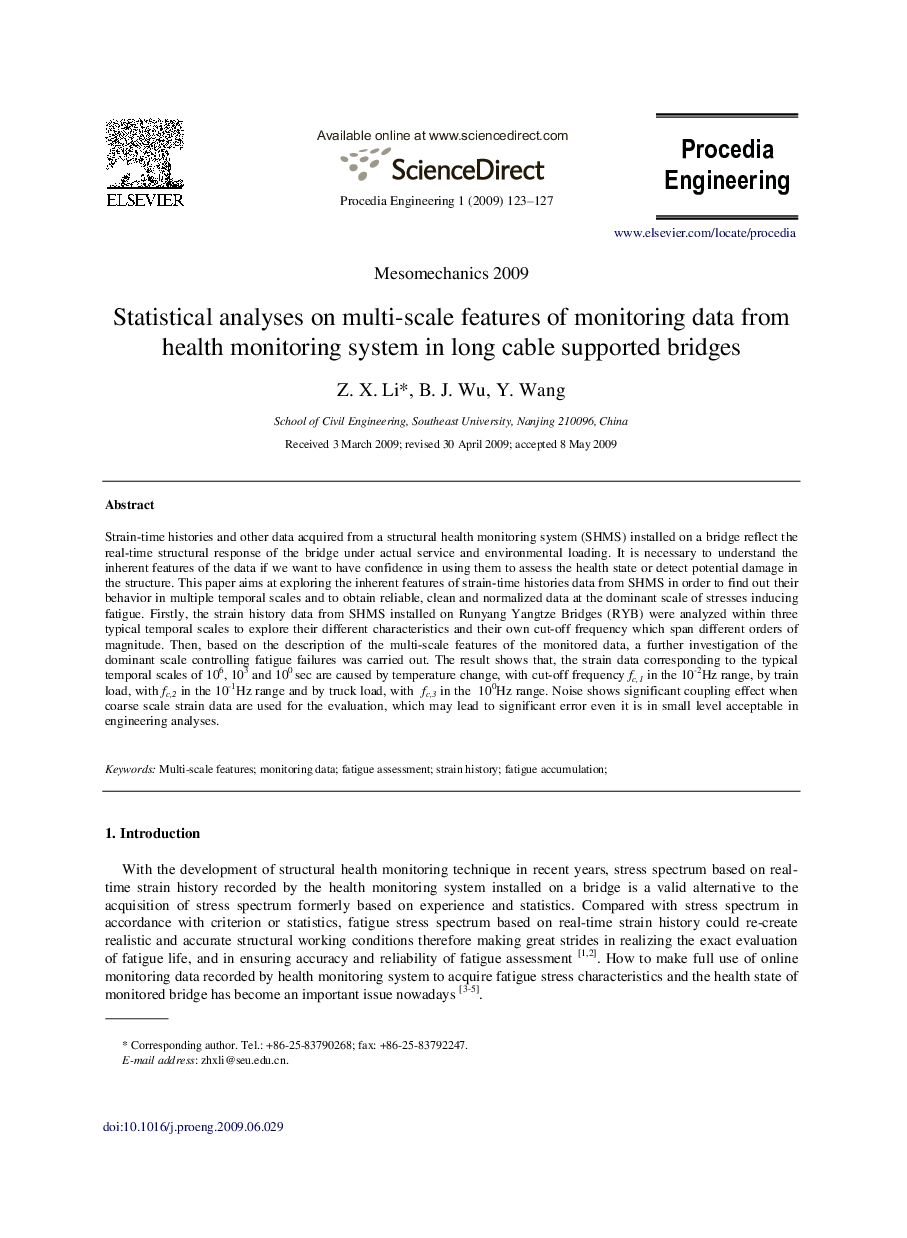| Article ID | Journal | Published Year | Pages | File Type |
|---|---|---|---|---|
| 864559 | Procedia Engineering | 2009 | 5 Pages |
Strain-time histories and other data acquired from a structural health monitoring system (SHMS) installed on a bridge reflect the real-time structural response of the bridge under actual service and environmental loading. It is necessary to understand the inherent features of the data if we want to have confidence in using them to assess the health state or detect potential damage in the structure. This paper aims at exploring the inherent features of strain-time histories data from SHMS in order to find out their behavior in multiple temporal scales and to obtain reliable, clean and normalized data at the dominant scale of stresses inducing fatigue. Firstly, the strain history data from SHMS installed on Runyang Yangtze Bridges (RYB) were analyzed within three typical temporal scales to explore their different characteristics and their own cut-off frequency which span different orders of magnitude. Then, based on the description of the multi-scale features of the monitored data, a further investigation of the dominant scale controlling fatigue failures was carried out. The result shows that, the strain data corresponding to the typical temporal scales of 106, 103 and 100 sec are caused by temperature change, with cut-off frequency fc,1 in the 10−2 Hz range, by train load, with fc,2 in the 10−1 Hz range and by truck load, with fc,3 in the 100 Hz range. Noise shows significant coupling effect when coarse scale strain data are used for the evaluation, which may lead to significant error even it is in small level acceptable in engineering analyses.
